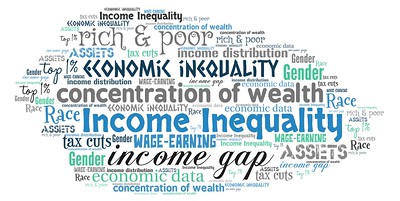Microeconomics
Topic outline
-
Welcome to Microeconomics [SUBJ ####]!
Course Introduction
Economics is the study of how people make choices under scarcity and how these choices affect the allocation of resources in society. In this course, you will learn the basic economic principles that serve as the foundation of economic analysis. You will understand how supply and demand determine prices and how prices coordinate economic activity. You will also analyze the economic impact of government intervention, such as regulation, price setting, and taxes, on consumers and producers. Furthermore, you will explore how externalities affect the efficiency of markets and what policies can be implemented to correct them. Additionally, you will understand how international trade can improve the well-being of society and what factors influence trade patterns. Finally, you will discuss the basic theories behind consumer and producer behavior and how they affect the performance of firms under different market structures. Moreover, you will learn about macroeconomics, which is the study of the economy as a whole. You will examine how aggregate indicators, such as gross domestic product, inflation, unemployment, and interest rates, are measured and how they reflect the state of the economy. You will also learn about the role of fiscal and monetary policy in stabilizing the economy and promoting economic growth.Upon successful completion of this course, the student will be able to:- Identify the basic economic principles that serve as the foundation of economic analysis
- Understand the interaction of supply and demand in determining prices and the role of prices in coordinating economic activity
- Analyze the economic impact of government regulation, price setting, and taxes on consumers and producers
- Explain how externalities affect the efficiency of markets, and what can be done to improve the efficiency of markets in which externalities exist
- Understand how international trade can improve the well-being of the society
- Discuss the basic theories behind consumer and producer behavior
- Analyze the performance of firms under different market structures
Adopting institution should provide learners information on how to navigate the course. Consider adding an introductory navigation video. Text description could include, for example:Structure of the Course
Describe the course structure, such as number of modules, to allow the learner to understand how the learning process if structured and carried out.
The course is organized into five unifying units with individual modules in each. There are 19 modules. The units are:
- What is Economics? This module corresponds to the first two modules or chapters, which introduce students to the study of economics with a focus on making choices in a world of scarce resources.
- Supply and Demand, This module corresponds to Chapters 3 and 4, and it introduces and explains the first analytical model in economics–supply, demand, and equilibrium–before showing applications in the markets for labor and finance.
- The Fundamentals of Microeconomic Theory: This module corresponds to Chapters 5 through 9 and it begins the microeconomics portion of the text, presenting the theories of consumer behavior, production and costs, and the different models of market structure, including some simple game theory.
- Microeconomic Policy Issues, This module corresponds to Chapters 10 through 17, covers the range of topics in applied micro, framed around the concepts of public goods and positive and negative externalities. Students explore competition and antitrust policies, environmental problems, poverty, income inequality, and other labor market issues. The text also covers information, risk and financial markets, and public economy.
- International Economics, This module corresponds to Chapters 18 and 19, introduces the international dimensions of economics, including international trade and protectionism.
Navigating the Course
This course is set up in Modules covering various topics which may be accessed from the course navigation menu on the left or by scrolling below. Modules may be collapsed in the menu and it the body of the course to minimize scrolling. Each module includes the relevant chapters followed by various activities, which may include discussion forums, listening activities and quizzes, practice quizzes, module tests, and other relevant activities as appropriate for each module. Many items are required and may be marked as completed automatically when the activity has been submitted (the broken check box), but others will marked as done by the student (the solid check box).Please move through the items below and continue through the Learner Support and Getting Started modules before moving on to Module 1. Be sure to check for announcements and due dates to stay on track.
 This course and its contents are licensed under a Creative Commons Attribution 4.0 International License by LOUIS: The Louisiana Library Network, except where otherwise noted.
This course and its contents are licensed under a Creative Commons Attribution 4.0 International License by LOUIS: The Louisiana Library Network, except where otherwise noted. -
This module contains all the items you should review and complete before you begin Module 1. Before moving on, be sure to:
- Check the News and Announcements Forum
- Read the Course Syllabus
- Introduce yourself to the class
- Read the instructions for the Q & A Forum
Good luck in the course!-
Use this forum to tell us a little about yourself and your interests. Some topic ideas:
- What is your field of study/research interest or concentration?
- What are you most interested in learning about in this class and why?
- Have you ever taken an online class before?
- Any other information you would like to share with your classmates, such as special interests or activities.
Post a picture! We look forward to meeting you.
-
Use this forum to ask your instructor any questions you have about the course. You may post at any time, and your instructor will respond here. Be as specific as possible.
Please keep in mind that others can see your posts, so do not post any personal information. If you have questions about your grade, please email your instructor directly. You can expect a response to posts and emails within [X] hours. [Recommendation is 24 hours M-F, next business day on weekends.]
Subscription should be set to Auto.
- Check the News and Announcements Forum
-
Use the information in this module to customize the template to your needs. This module is currently hidden from students, and available for you to refer to throughout the semester.
-

What is economics and why should you spend your time learning it? After all, there are other disciplines you could be studying, and other ways you could be spending your time. Making choices is at the heart of what economists study, and your decision to take this course is as much as economic decision as anything else.
Economics is probably not what you think. It is not primarily about money or finance. It is not primarily about business. It is not mathematics. What is it then? It is both a subject area and a way of viewing the world.
Upon completion of this module, you will be able to:- Discuss the importance of studying economics
- Explain the relationship between production and division of labor
- Evaluate the significance of scarcity
- Describe microeconomics
- Describe macroeconomics
- Contrast monetary policy and fiscal policy
- Interpret a circular flow diagram
- Explain the importance of economic theories and models
- Describe goods and services markets and labor markets
- Contrast traditional economies, command economies, and market economies
- Explain gross domestic product (GDP)
- Assess the importance and effects of globalization
To achieve these objectives: [Edit these items to match your resources and activities.]
- Read the Module 1 Introduction
- Read Chapter 1 in the course textbook, Microeconomics.
- Complete Module 1 Discussion.
- Complete Module 1 Quiz.
- Complete the Module 1 Assignment.
- For course instructors, list any other reading assignments here. [Include all reading assignments here that are outside of Moodle. Be as
concise as possible. More information can be included in the
third-party section below, if necessary.]
- Complete the [specific activities in the module. Include all in the order you want them completed.]
Note the check boxes to the right that help you track your progress: some are automatic, and some are manual. [Delete in subsequent modules.]
Module Pressbooks Resources and Activities
You will find the following resources and activities in this module at the Pressbooks website. Click on the links below to access or complete each item.
-
-
In Class Activity (hide from students)
Activity: Create a scavenger hunt using FRED. Divide the students into teams and give them a list of questions that require them to use FRED to find the answers. For example:
- What is the current unemployment rate in the US?
- Which country has the highest GDP per capita in 2020?
- How has the consumer price index changed since 2010?
- What is the correlation between inflation and interest rates?
The first team to answer all the questions correctly wins a prize. This activity can help the students learn how to use FRED to access and analyze economic data, as well as apply some of the concepts they learned in microeconomics.
To access FRED, there are several options.
- The FRED website 1, where you can search or browse for the data by typing in your search term or using other organized points of access.
- The FRED add-in for Microsoft Excel, which allows you to download, update, and graph data within Excel. You can get the add-in from Excel>Insert tab>Get Add-in>button>search the add-in>Add
- The FRED API1, which allows software developers to access the database functionality and integrate FRED data into their own applications.
- The FRED apps for iPhone and Android devices 1, which let you view and graph data on your mobile device.
-

You will learn quickly when you examine the relationship between economics and scarcity that choices involve tradeoffs. Every choice has a cost.
Because people live in a world of scarcity, they cannot have all the time, money, possessions, and experiences they wish. Neither can society.
This chapter will continue our discussion of scarcity and the economic way of thinking by first introducing three critical concepts: opportunity cost, marginal decision making, and diminishing returns. Later, it will consider whether the economic way of thinking accurately describes either how we make choices and how we should make them.
Upon completion of this module, you will be able to:- Calculate and graph budget constraints
- Explain opportunity sets and opportunity costs
- Evaluate the law of diminishing marginal utility
- Explain how marginal analysis and utility influence choices
- Interpret production possibilities frontier graphs
- Contrast a budget constraint and a production possibilities frontier
- Explain the relationship between a production possibilities frontier and the law of diminishing returns
- Contrast productive efficiency and allocative efficiency
- Define comparative advantage
- Analyze arguments against economic approaches to decision-making
- Interpret a tradeoff diagram
- Contrast normative statements and positive statements
To achieve these objectives: [Edit these items to match your resources and activities.]
- Read the Module 2 Introduction
- Read Chapter 2 in the course textbook, Microeconomics.
- Complete Module 2 Discussion.
- Complete Module 2 Quiz.
- Complete the Module 2 Assignment.
- For course instructors, list any other reading assignments here. [Include all reading assignments here that are outside of Moodle. Be as
concise as possible. More information can be included in the
third-party section below, if necessary.]
- Complete the [specific activities in the module. Include all in the order you want them completed.]
Module Pressbooks Resources and Activities
You will find the following resources and activities in this module at the Pressbooks website. Click on the links below to access or complete each item.
-
-
In Class Activity (hide from students)
Course SLO 1: Identify the basic economic principles that serve as the foundation of economic analysis
Course SLO 2: Understand the interaction of supply and demand in determining prices and the role of prices in coordinating economic activity
Module SLO: 2.1.2 Explain Opportunity sets and opportunity costs
When we think about taking an action or participating in an activity, we often only think about the monetary cost of this action and do not consider anything else when deciding whether to act. As we consider opportunity cost, we think about more than just the monetary cost of an action by thinking about everything we must give up to take that action. In this activity, your task is to:- Identify and describe the opportunity cost of an activity that you enjoy. Remember to consider everything you must give up to take part in this activity.
- Using opportunity cost and benefits, demonstrate how someone might decide whether to participate in your activity or not.
Instructor Notes with Hockey and Uber Example:
One activity that I enjoy doing with my family is attending hockey games on Saturday nights. An alternative to attending hockey games for me would be driving for and making money with Uber around our nearby city. In this example, the opportunity cost of attending a hockey game, in addition to the cost of our tickets, is the wages I could have earned by driving for Uber. In deciding whether to attend a hockey game or driving for Uber, I must consider whether the hockey game is worth the price of admission plus wages I could have earned by driving for Uber. If I value the hockey game more than the price of tickets PLUS the lost wages, I should attend the hockey game; however, if I value the money, I forego more than the hockey game, I should drive for Uber on this given Saturday night.
-

This chapter introduces the economic model of demand and supply—one of the most powerful models in all of economics. The discussion here begins by examining how demand and supply determine the price and the quantity sold in markets for goods and services, and how changes in demand and supply lead to changes in prices and quantities.
When economists talk about prices, they are less interested in making judgments than in gaining a practical understanding of what determines prices and why prices change.
Consider a price most of us contend with weekly: that of a gallon of gas. Why was the average price of gasoline in the United States $3.71 per gallon in June 2014? Why did the price for gasoline fall sharply to $1.96 per gallon by January 2016? To explain these price movements, economists focus on the determinants of what gasoline buyers are willing to pay and what gasoline sellers are willing to accept.
As it turns out, the price of gasoline in June of any given year is nearly always higher than the price in January of that same year. Over recent decades, gasoline prices in midsummer have averaged about 10 cents per gallon more than their midwinter low. The likely reason is that people drive more in the summer, and are also willing to pay more for gas, but that does not explain how steeply gas prices fell. Other factors were at work during those 18 months, such as increases in supply and decreases in the demand for crude oil.
Upon completion of this module, you will be able to:- Explain demand, quantity demanded, and the law of demand
- Identify a demand curve and a supply curve
- Explain supply, quantity supplied, and the law of supply
- Explain equilibrium, equilibrium price, and equilibrium quantity
- Identify factors that affect demand
- Graph demand curves and demand shifts
- Identify factors that affect supply
- Graph supply curves and supply shifts
- Identify equilibrium price and quantity through the four-step process
- Graph equilibrium price and quantity
- Contrast shifts of demand or supply and movements along a demand or supply curve
- Graph demand and supply curves, including equilibrium price and quantity, based on real-world examples
- Explain price controls, price ceilings, and price floors
- Analyze demand and supply as a social adjustment mechanism
- Contrast consumer surplus, producer surplus, and social surplus
- Explain why price floors and price ceilings can be inefficient
- Analyze demand and supply as a social adjustment mechanism
To achieve these objectives: [Edit these items to match your resources and activities.]
- Read the Module 3 Introduction
- Read Chapter 3 in the course textbook, Microeconomics.
- Complete Module 3 Discussion.
- Complete Module 3 Quiz.
- Complete the Module 3 Assignment.
- For course instructors, list any other reading assignments here.
[Include all reading assignments here that are outside of Moodle. Be as
concise as possible. More information can be included in the
third-party section below, if necessary.]
- Complete the [specific activities in the module. Include all in the order you want them completed.]
Module Pressbooks Resources and Activities
You will find the following resources and activities in this module at the Pressbooks website. Click on the links below to access or complete each item.
-
-
Module 3 In Class Activity (hide from students)
Course SLO 1: Identify the basic economic principles that serve as the foundation of economic analysis
Course SLO 2: Understand the interaction of supply and demand in determining prices and the role of prices in coordinating economic activity
Module SLO: 3.4.2 - Explain price controls, price ceilings, and price floors
The previous chapter introduced Adam Smith’s invisible hand. In this discussion, your task is to:
1. Explain how markets can allocate resources in a way that they go to those who value them the most
A quick hint is to think about examples of new products and when they are released, but you can also think about goods that are needs for some people, but wants for others.
Instructor Notes with Game Consoles Example:
In late 2020, the newest generation of game consoles were released by Sony with the PlayStation 5 and Microsoft with the Xbox Series S/X. Since their release, Sony and Microsoft have been unable to keep up with demand, and whenever they have inventory available, it is about instantly sold out. If one wanted to get one of the new consoles, and not wait for the shortage to alleviate itself, one would need to buy a console on the secondary market for around double the retail price of the product. The secondary market has made it so that people who really want the console will pay the higher price; then as shortages in the technology industry alleviate themselves, more consoles will be available for the people who are willing to wait for a lower price.
-
 The theories of supply and demand do not apply just to markets for goods. They apply to any market, even markets for things we may not think of as goods and services like labor and financial services. Labor markets are markets for employees or jobs. Financial services markets are markets for saving or borrowing.
The theories of supply and demand do not apply just to markets for goods. They apply to any market, even markets for things we may not think of as goods and services like labor and financial services. Labor markets are markets for employees or jobs. Financial services markets are markets for saving or borrowing.
When we think about demand and supply curves in goods and services markets, it is easy to picture the demanders and suppliers: businesses produce the products and households buy them. Who are the demanders and suppliers in labor and financial service markets? In labor markets job seekers (individuals) are the suppliers of labor, while firms and other employers who hire labor are the demanders for labor. In financial markets, any individual or firm who saves contributes to the supply of money, and any who borrows (person, firm, or government) contributes to the demand for money.
As this chapter will illustrate, we can analyze labor markets and financial markets with the same tools we use to analyze demand and supply in the goods markets.Upon completion of this module, you will be able to:- Predict shifts in the demand and supply curves of the labor market
- Explain the impact of new technology on the demand and supply curves of the labor market
- Explain price floors in the labor market such as minimum wage or a living wage
- Identify the demanders and suppliers in a financial market
- Explain how interest rates can affect supply and demand
- Analyze the economic effects of U.S. debt in terms of domestic financial markets
- Explain the role of price ceilings and usury laws in the U.S.
- Apply demand and supply models to analyze prices and quantities
- Explain the effects of price controls on the equilibrium of prices and quantities
To achieve these objectives: [Edit these items to match your resources and activities.]
- Read the Module 4 Introduction
- Read Chapter 4 in the course textbook, Microeconomics.
- Complete Module 4 Discussion.
- Complete Module 4 Quiz.
- .Complete the Module 4 Assignment
- For course instructors, list any other reading assignments here.[Include all reading assignments here that are outside of Moodle. Be as
concise as possible. More information can be included in the
third-party section below, if necessary.]
- Complete the [specific activities in the module. Include all in the order you want them completed.]
Module Pressbooks Resources and Activities
You will find the following resources and activities in this module at the Pressbooks website. Click on the links below to access or complete each item.
-
-
Module 4 In Class Activity (hide from students)
Course SLO 1: Identify the basic economic principles that serve as the foundation of economic analysis
Course SLO 3: Analyze the economic impact of government regulation, price setting, and taxes on consumers and producers
Module SLO: 4.1.3 - Explain price floors in the labor market such as minimum wage or living wage
When we hear discussions regarding policy, the phrase “living wage” often comes up. Sometimes it regards a minimum hourly wage; other times, it is used in the context of universal basic income.
As we expand this living wage discussion from a local to a nationwide discussion, we will run into some challenges. In this discussion, your task is to:
- Pick a challenge that would make it difficult to define a set “living wage” across a nation
- Explain why this challenge creates a difficulty, and the obstacles it makes to create good policy
Hint: To review minimum wage as an example of a price floor, re-read 4.1 “Demand and supply at Work in Labor Markets” and the Clear It Up discussion.
Instructor Notes with Living Wage Example:
Living wage is a phrase that is commonly mentioned by politicians and media outlets. This prompt makes a student think about what a living wage is. Is it the same in New York City as it is in the middle of Iowa? Do some people have skills that can help a dollar go further? Maybe someone with a green thumb can live with less money than a person who struggles with gardening. The difficulty could make a challenge for policy since (1) voters will not necessarily understand what others view as acceptable. In Iowa, $15/hour buys you more than $15/hour in New York City. Also, someone who is handy can probably live for less than someone who does not have those skills.
-

Anyone who has studied economics knows the law of demand: a higher price will lead to a lower quantity demanded. What you may not know is how much lower the quantity demanded will be. Similarly, the law of supply states that a higher price will lead to a higher quantity supplied. The question is: How much higher? This chapter will explain how to answer these questions and why they are critically important in the real world.
Upon completion of this module, you will be able to:- Calculate the price elasticity of demand
- Calculate the price elasticity of supply
- Differentiate between infinite and zero elasticity
- Analyze graphs in order to classify elasticity as constant unitary, infinite, or zero
- Analyze how price elasticities impact revenue
- Evaluate how elasticity can cause shifts in demand and supply
- Predict how the long-run and short-run impacts of elasticity affect equilibrium
- Explain how the elasticity of demand and supply determine the incidence of a tax on buyers and sellers
- Calculate the income elasticity of demand and the cross-price elasticity of demand
- Calculate the elasticity in labor and financial capital markets through an understanding of the elasticity of labor supply and the elasticity of savings
- Apply concepts of price elasticity to real-world situations.
To achieve these objectives: [Edit these items to match your resources and activities.]
- Read the Module 5 Introduction
- Read Chapter 5 in the course textbook, Microeconomics.
- Complete Module 5 Discussion.
- Complete Module 5 Quiz.
- Complete the Module 5 Assignment.
- For course instructors, list any other reading assignments here. [Include all reading assignments here that are outside of Moodle. Be as
concise as possible. More information can be included in the
third-party section below, if necessary.]
- Complete the [specific activities in the module. Include all in the order you want them completed.]
Module Pressbooks Resources and Activities
You will find the following resources and activities in this module at the Pressbooks website. Click on the links below to access or complete each item.
-
-
Module 5 In Class Activity (hide from students)
Course SLO 1: Identify the basic economic principles that serve as the foundation of economic analysis
Course SLO 2: Understand the interaction of supply and demand in determining prices and the role of prices in coordinating economic activity
Course SLO 6: Discuss the basic theories behind consumer and producer behavior
Module SLO: 5.2.2 – Analyze Graphs in order to classify elasticity as constant, unitary, infinite or zero
Module SLO: 5.4.3 – Apply concepts of price elasticity to real-world situations
Chapter 5 covers the topic of elasticity, which calculates the correlation between the quantity demanded or supplied of a good with some other variable. For this discussion, your task is to:
- Pick one type of elasticity and a good (or pair of goods)
- Describe what you would expect elasticity to look like for the good(s) and explain why you think it would look that way for your selected good(s).
Hints: The most popular types of Elasticity are:
- Price Elasticity of Demand (or Supply)
- Income Elasticity of Demand
- Cross-Price Elasticity
Classifications of Elasticity include constant, unitary, infinite, and zero
Instructor Notes:
This prompt is open for students to take where they want to. After picking their own good or service, they must consider whether they think their good is elastic or inelastic as well as the degree to which it is elastic or inelastic. If the students select income elasticity, they will need to explain whether they think their good is a normal or inferior good. For Cross-Price Elasticity, students will try to consider whether goods are complements and substitutes and then explain why, from the elasticity viewpoint.
-

Microeconomics seeks to understand the behavior of individual economic agents such as individuals and businesses. Economists believe that we can analyze individuals’ decisions, such as what goods and services to buy, as choices we make within certain budget constraints. Generally, consumers are trying to get the most for their limited budget. In economic terms they are trying to maximize total utility, or satisfaction, given their budget constraint. The analysis in this chapter will build on the budget constraint that we introduced in the Choice in a World of Scarcity chapter. This chapter will also illustrate how economic theory provides a tool to systematically look at the full range of possible consumption choices to predict how consumption responds to changes in prices or incomes.
Upon completion of this module, you will be able to:- Calculate total utility
- Propose decisions that maximize utility
- Explain marginal utility and the significance of diminishing marginal utility
- Explain how income, prices, and preferences affect consumer choices
- Contrast the substitution effect and the income effect
- Utilize concepts of demand to analyze consumer choices
- Apply utility-maximizing choices to governments and businesses
- Evaluate the reasons for making intertemporal choices
- Interpret an intertemporal budget constraint
- Analyze why people in America tend to save such a small percentage of their income
To achieve these objectives: [Edit these items to match your resources and activities.]
- Read the Module 6 Introduction
- Read Chapter 6 in the course textbook, Microeconomics.
- Complete Module 6 Discussion.
- Complete Module 6 Quiz.
- Complete the Module 6 Assignment.
- For course instructors, list any other reading assignments here. [Include all reading assignments here that are outside of Moodle. Be as
concise as possible. More information can be included in the
third-party section below, if necessary.]
- Complete the [specific activities in the module. Include all in the order you want them completed.]
Module Pressbooks Resources and Activities
You will find the following resources and activities in this module at the Pressbooks website. Click on the links below to access or complete each item.
-
-
Module 6 In Class Activity (hide from students)
Course SLO 1: Identify the basic economic principles that serve as the foundation of economic analysis
Course SLO 2: Understand the interaction of supply and demand in determining prices and the role of prices in coordinating economic activity
Course SLO 6: Discuss the basic theories behind consumer and producer behavior
Module SLO: 6.1.3 – Explain marginal utility and the significance of diminishing marginal utility
Diminishing marginal utility holds that the additional utility decreases with each unit added. It is another example of the more general law of diminishing returns that we’ve seen in an earlier chapter, Choice in a World of Scarcity.
- Pick a good or service and explain how or why one would experience diminishing marginal utility for this good. It may also help to explain over what time horizon you would experience this diminishing marginal utility.
- Explain why is it important to consider the concept of diminishing marginal utility for the good you selected?
Hint: Section 1, Consumption Choices, provides example that demonstrates diminishing marginal utility using movies and t-shirts.
Instructor Notes:
With Diminishing Marginal Utility, we will see that marginal utility decreases as we consume more of a good. A common example deals with pizza. The first slice is great, but as we consume more and more, slices become less and less appealing. This becomes important when considering purchasing a good as we will spend less for additional units of a product than the initial. This is why firms may offer bulk pricing, or 50% off of a second product; gas stations may charge $2 for 1 soda pop, or $3 for 2 soda pops.
-

This chapter is the first of four chapters that explores the theory of the firm. This theory explains how firms behave. What does that mean? Let’s define what we mean by the firm. A firm (or producer or business) combines inputs of labor, capital, land, and raw or finished component materials to produce outputs. These inputs carry costs. We'll discuss how firms determine theirs costs and desired profit levels, and what impacts each of those. Let's explore.
Upon completion of this module, you will be able to:
- Explain the difference between explicit costs and implicit costs
- Understand the relationship between cost and revenue
- Understand the concept of a production function
- Differentiate between the different types of inputs or factors in a production function
- Differentiate between fixed and variable inputs
- Differentiate between production in the short run and in the long run
- Differentiate between total and marginal product
- Understand the concept of diminishing marginal productivity
- Understand the relationship between production and costs
- Understand that every factor of production has a corresponding factor price
- Analyze short-run costs in terms of total cost, fixed cost, variable cost, marginal cost, and average cost
- Calculate average profit
- Evaluate patterns of costs to determine potential profit
- Understand how long run production differs from short run production.
- Calculate long run total cost
- Identify economies of scale, diseconomies of scale, and constant returns to scale Interpret graphs of long-run average cost curves and short-run average cost curves
- Analyze cost and production in the long run and short run.
To achieve these objectives: [Edit these items to match your resources and activities.]
- Read the Module 7 Introduction
- Read Chapter 7 in the course textbook, Microeconomics.
- Complete Module 7 Discussion.
- Complete Module 7 Quiz.
- Complete the Module 7 Assignment.
- For course instructor - List additional readings. [Include all reading assignments here that are outside of Moodle. Be as
concise as possible. More information can be included in the
third-party section below, if necessary.]
- Complete the [specific activities in the module. Include all in the order you want them completed.]
Module Pressbooks Resources and Activities
You will find the following resources and activities in this module at the Pressbooks website. Click on the links below to access or complete each item.
-
Module 7 In Class Activity (hide from students)
Course SLO 1: Identify the basic economic principles that serve as the foundation of economic analysis
Course SLO 2: Understand the interaction of supply and demand in determining prices and the role of prices in coordinating economic activity
Course SLO 6:Discuss the basic theories behind consumer and producer behavior
Course SLO 7: Analyze the performance of firms under different market structures
Module SLO: 6.1.3 – Explain marginal utility and the significance of diminishing marginal utility
Section 5 introduces economies of scale and dives into the difference between economies of scale, constant returns to scale, and diseconomies of scale. In this discussion, we will attempt to bring this to life by considering and speculating on real world firms. For this discussion, your task is to:
1. Pick a firm in the real world and explain whether you would think they would be considered in the range of economies of scale, diseconomies of scale, or constant returns to scale.
2. In your firm’s market, explain whether you think their market can support several firms that are sized differently or if their market must have identically (or nearly identically) sized firms and explain why this might be for your firm’s industry.
Instructor Notes:
The goal of this prompt is to have students to think about how this chapter applies to the world outside of the textbook. Firms in economies of scale will likely be small, and students can compare why larger firms can often sell goods at a lower price than smaller firms. If students look at very large firms, they may run into diseconomies of scale. To complete part 2, it will be useful for students to consider the market that a firm competes in.
-

Most businesses face two realities: no one is required to buy their products, and even customers who might want those products may buy from other businesses instead. Firms that operate in perfectly competitive markets face this reality. In this chapter, you will learn how such firms make decisions about how much to produce, how much profit they make, whether to stay in business or not, and many others.
Upon completion of this module, you will be able to:
- Explain the characteristics of a perfectly competitive market
- Discuss how perfectly competitive firms react in the short run and in the long run
- Calculate profits by comparing total revenue and total cost
- Identify profits and losses with the average cost curve
- Explain the shutdown point
- Determine the price at which a firm should continue producing in the short run
- Explain how entry and exit lead to zero profits in the long run
- Discuss the long-run adjustment process
- Apply concepts of productive efficiency and allocative efficiency to perfectly competitive markets
- Compare the model of perfect competition to real-world markets.
To achieve these objectives: [Edit these items to match your resources and activities.]
- Read the Module 8 Introduction
- Read Chapter 8 in the course textbook, Microeconomics.
- Complete Module 8 Discussion.
- Complete Module 8 Quiz.
- Complete the Module 8 Assignment.
- For course instructors, list any other reading assignments here. [Include all reading assignments here that are outside of Moodle. Be as
concise as possible. More information can be included in the
third-party section below, if necessary.]
- Complete the [specific activities in the module. Include all in the order you want them completed.]
Module Pressbooks Resources and Activities
You will find the following resources and activities in this module at the Pressbooks website. Click on the links below to access or complete each item.
-
-
Module 8 In Class Activity (hide from students)
Course SLO 1: Identify the basic economic principles that serve as the foundation of economic analysis
Course SLO 2: Understand the interaction of supply and demand in determining prices and the role of prices in coordinating economic activity
Course SLO 5: Explain how externalities affect the efficiency of markets, and what can be done to improve the efficiency of markets in which externalities exist
Course SLO 6: Discuss the basic theories behind consumer and producer behavior
Course SLO 7: Analyze the performance of firms under different market structures
Module SLO: 8.2.3 – Explain the shutdown point;
Module SLO: 8.3.1 – Explain how entry and exit lead to zero profits in the long run
Between Section 2 and 3 of the textbook, we see a short-run decision to open or shut down for the day and a long-run decision to enter or exit a market. For this discussion, your task is to:
- Think of an example, either from personal experience or from a business, that demonstrates the decision to shut down, but stay in a market. For example, when might you take a break up not give up on a project entirely
- Explain why either you might choose to stay
home or a business might make the decision not produce in the short-run, yet
stay in the activity or market in the long-run.
Instructor Notes:
A simple example to illustrate this is the decision to call in sick from work. I may call in because I do not feel well that day, and I would rather stay home than retain my sick day or get paid for the day, but just because I call in sick does not mean I quit my job. Same thing with firms - they may have a day where they are better off to close for the day, but not close business for good.
-

Many believe that top executives at firms are the strongest supporters of market competition, but this belief is far from the truth. Think about it this way: If you very much wanted to win an Olympic gold medal, would you rather be far better than everyone else, or locked in competition with many athletes just as good as you? Similarly, if you would like to attain a very high level of profits, would you rather manage a business with little or no competition, or struggle against many tough competitors who are trying to sell to your customers? Monopolistic competition involves many firms competing against each other, but selling products that are distinctive in some way. When products are distinctive, each firm has a mini-monopoly on its particular style or flavor or brand name. However, firms producing such products must also compete with other styles and flavors and brand names. The term “monopolistic competition” captures this mixture of mini-monopoly and tough competition. Let's explore these various types of competition.
Upon completion of this module, you will be able to:
- Distinguish between a natural monopoly and a legal monopoly.
- Explain how economies of scale and the control of natural resources led to the necessary formation of legal monopolies
- Analyze the importance of trademarks and patents in promoting innovation
- Identify examples of predatory pricing
- Explain the perceived demand curve for a perfect competitor and a monopoly
- Analyze a demand curve for a monopoly and determine the output that maximizes profit and revenue
- Calculate marginal revenue and marginal cost
- Explain allocative efficiency as it pertains to the efficiency of a monopoly
- Explain the significance of differentiated products
- Describe how a monopolistic competitor chooses price and quantity
- Discuss entry, exit, and efficiency as they pertain to monopolistic competition
- Analyze how advertising can impact monopolistic competition
- Explain why and how oligopolies exist
- Contrast collusion and competition
- Interpret and analyze the prisoner’s dilemma diagram
- Evaluate the tradeoffs of imperfect competition
To achieve these objectives: [Edit these items to match your resources and activities.]
- Read the Module 9 Introduction
- Read and view the materials in the Module 9 Pressbooks book, Microeconomics.
- Complete Module 9 Discussion Forum.
- Complete Module 9 Quiz.
- Read Chapter # in Textbook Title, Article Title, etc.
[Include all reading assignments here that are outside of Moodle. Be as
concise as possible. More information can be included in the
third-party section below, if necessary.]
- Complete the [specific activities in the module. Include all in the order you want them completed.]
Module Pressbooks Resources and Activities
You will find the following resources and activities in this module at the Pressbooks website. Click on the links below to access or complete each item.
-
Module 9 In Class Activity (hide from students)
Course SLO 1: Identify the basic economic principles that serve as the foundation of economic analysis
Course SLO 3: Analyze the economic impact of government regulation, price setting, and taxes on consumers and producers
Course SLO 7: Analyze the performance of firms under different market structuresModule SLO: 9.1.1 – Distinguish between a natural monopoly and a legal monopoly
Module SLO: 9.2.4 – Explain allocative efficiency as it pertains to the efficiency of a monopoly
When we consider monopolies, it is interesting to note that in the long run, most perceived monopolies do have to compete with other monopolies. That is, if my electric company is bad, I can move to another electric company’s zone. For this discussion, you should consider the short run where it may not be an option to simply move to an area served by another company. For this discussion, your task is to:
- Think of a monopoly that is prevalent in your life and identify whether it is a natural or legal monopoly
- Describe some benefits of your monopoly being a monopoly for the consumer
- Explain some drawbacks
of your monopoly being a monopoly for the consumer.
Instructor Notes:
Examples of natural monopolies might include gas network, electric grid, railway infrastructure, or natural fibre-optic broadband network. A legal monopoly might include utilities run by the city.
We often emphasize that monopolies lead to higher prices and lower quantities, but do not always consider the benefits of having a monopoly in certain industries. This prompt will do just that by encouraging students to think about the benefits and drawbacks of having a monopoly. It is geared for students to consider the consumers perspective. The drawbacks of monopolies are relatively straightforward: higher prices, lower quantity, and often times a lower quality product or lower customer service. However, natural monopolies, may help consumers by keeping prices affordable and the resource comparatively easy to access.
-

This chapter discusses public policy issues about competition. How can economists and governments determine when mergers of large companies like AT&T and Bell-South should be allowed and when they should be blocked? The government also plays a role in policing anti-competitive behavior other than mergers, like prohibiting certain kinds of contracts that might restrict competition. In the case of natural monopoly, however, trying to preserve competition probably will not work very well, and so government will often resort to regulation of price and/or quantity of output. In recent decades, there has been a global trend toward less government intervention in the price and output decisions of businesses.
Upon completion of this module, you will be able to:
- Explain antitrust law and its significance
- Calculate concentration ratios
- Calculate the Herfindahl-Hirschman Index (HHI)
- Evaluate methods of antitrust regulation
- Analyze restrictive practices
- Explain tying sales, bundling, and predatory pricing
- Evaluate a real-world situation of possible anti-competitive and restrictive practices
- Evaluate the appropriate competition policy for a natural monopoly
- Interpret a graph of regulatory choices
- Contrast cost-plus and price cap regulation
- Evaluate the effectiveness of price regulation and antitrust policy
- Explain regulatory capture and its significance.
To achieve these objectives: [Edit these items to match your resources and activities.]
- Read the Module 10 Introduction.
- Read Chapter 10 in the course textbook, Microeconomics.
- Complete the Module 10 Discussion Forum.
- Complete the Module 10 Assignment.
- Complete the Module 10 Quiz.
- For course instructors, Textbook Title, Article Title, etc.
[Include all reading assignments here that are outside of Moodle. Be as
concise as possible. More information can be included in the
third-party section below, if necessary.]
- Complete the [specific activities in the module. Include all in the order you want them completed.]
Module Pressbooks Resources and Activities
You will find the following resources and activities in this module at the Pressbooks website. Click on the links below to access or complete each item.
-
Module 10 In Class Activity (hide from students)
Course SLO 1: Identify the basic economic principles that serve as the foundation of economic analysis
Course SLO 3: Analyze the economic impact of government regulation, price setting, and taxes on consumers and producers
Course SLO 7: Analyze the performance of firms under different market structuresModule SLO: 10.2.1 – Analyze restrictive practices
Module SLO: 10.2.3 – Evaluate a real-world situation of possible anti-competitive and restrictive practices
Section 2 of the textbook introduces restrictive practices and lists a few types of these practices. For this discussion, your task is to:
1. Identify a good and firm that utilizes a restrictive practice
2. Explain how the restrictive practice works
3. Explain who benefits and who is harmed by this restrictive practice
4. In your opinion, is this a fair restrictive practice, or is it one that may be predatory?
Instructor Notes:
In part 4, you may expect to see mixed responses from students, where they may say certain situations are fair, while others are not. In feedback, you may prompt the student to consider how their evaluation was influenced by their personal experiences. Would their opinion change if this restrictive practice was applied to another good or firm?
-

The problem of pollution arises for every economy in the world, whether high-income or low-income, and whether market-oriented or command-oriented. Every country needs to strike some balance between production and environmental quality. This chapter begins by discussing how firms may fail to take certain social costs, like pollution, into their planning if they do not need to pay these costs. Traditionally, policies for environmental protection have focused on governmental limits on how much of each pollutant could be emitted. While this approach has had some success, economists have suggested a range of more flexible, market-oriented policies that reduce pollution at a lower cost. We will consider both approaches, but first let’s see how economists frame and analyze these issues.
Upon completion of this module, you will be able to:
- Explain and give examples of positive and negative externalities
- Identify equilibrium price and quantity
- Evaluate how firms can contribute to market failure
- Explain command-and-control regulation
- Evaluate the effectiveness of command-and-control regulation
- Show how pollution charges impact firm decisions
- Suggest other laws and regulations that could fall under pollution charges
- Explain the significance of marketable permits and property rights
- Evaluate which policies are most appropriate for various situations
- Evaluate the benefits and costs of environmental protection
- Explain the effects of ecotourism
- Apply marginal analysis to illustrate the marginal costs and marginal benefits of reducing pollution
- Explain biodiversity
- Analyze the partnership of high-income and low-income countries in efforts to address international externalities
- Apply the production possibility frontier to evaluate the tradeoff between economic output and the environment
- Interpret a graphic representation of the tradeoff between economic output and environmental protection
To achieve these objectives: [Edit these items to match your resources and activities.]
- Read the Module 11 Introduction
- Read Chapter 11 in the course textbook, Microeconomics.
- Complete the Module 11 Discussion Forum.
- Complete the Module 11 Quiz.
- For Course Instructors, list any other reading assignments here.
[Include all reading assignments here that are outside of Moodle. Be as
concise as possible. More information can be included in the
third-party section below, if necessary.]
- Complete the [specific activities in the module. Include all in the order you want them completed.]
Module Pressbooks Resources and Activities
You will find the following resources and activities in this module at the Pressbooks website. Click on the links below to access or complete each item.
-
Module 11 In Class Group Activity (hide from students)
Course SLO 1: Identify the basic economic principles that serve as the foundation of economic analysis
Course SLO 3: Analyze the economic impact of government regulation, price setting, and taxes on consumers and producers
Course SLO 4: Explain how externalities affect the efficiency of markets, and what can be done to improve the efficiency of markets in which externalities existModule SLO: 11.4.1 – Evaluate the benefits and costs of environmental protection;
Module SLO: 11.4.3 – Apply marginal analysis to illustrate the marginal costs and marginal benefits of reducing pollution;
Module SLO: 11.6.1 – Apply the production possibility frontier to evaluate the tradeoff between economic output and the environment
Section 4 and 6 of this textbook introduce costs and tradeoffs that we see when we enact environmental protection. The potential side effects of eliminating pollution are applications of the Law of Diminishing Marginal Utility, which we saw in an earlier chapter section "How Individuals Make Choices Based on Their Budget Constraint.” For this discussion, your task is to:
1. Explain potential issues if we have a policy that only seeks to maximize market productivity.
2. Explain potential issues if we implement a policy that only concerns environmental protection.
Instructor Notes:
In this prompt, students should pick up on diminishing marginal utility. If we have a set of policy that focuses solely on market outcomes, we may run into major issues with pollution. As we work towards cleaner air, however, the benefits of cleaner air become less and less transparent. In large enough doses, everything is a poison, and in small enough doses, certain goods are not necessarily harmful. Similar to pollution, society will be less willing to allocate funds and resources to clean up more when pollution reaches a reasonable level since they won’t see the benefits of further cleaning when we reach the other end of this spectrum.
-

We do not often think of the government when we consider our leading products and entrepreneurs. We think of Apple, Google, Lyft, Tesla, Fitbit, and so on—creative innovators who built on the tools provided by these government efforts, using them in transformative ways. Competitive, private sector markets are often resistant to the risks involved with large-scale innovation, because failed experiments and lack of uptake lead to massive corporate and personal losses. Governments can take on riskier research and development projects. Because government spending is fueled by taxpayers, and all innovation leads to some level of employment change, these proposals are certainly complex and challenging to implement. This chapter deals with some of these issues: Will private companies be willing to invest in new technology? In what ways does new technology have positive externalities? What motivates inventors? What role should government play in encouraging research and technology? Are there certain types of goods that markets fail to provide efficiently, and that only government can produce? What happens when consumption or production of a product creates positive externalities?
Upon completion of this module, you will be able to:
- Identify the positive externalities of new technology.
- Explain the difference between private benefits and social benefits and give examples of each.
- Calculate and analyze rates of return
- Explain the effects of intellectual property rights on social and private rates of return.
- Identify three U.S. Government policies and explain how they encourage innovation
- Identify a public good using nonexcludable and non-rival as criteria
- Explain the free rider problem
- Identify several sources of public goods
To achieve these objectives: [Edit these items to match your resources and activities.]
- Read the Module 12 Introduction
- Read Chapter 12 in the course textbook, Microeconomics.
- Complete Module 12 Discussion Forum.
- Complete Module 12 Quiz.
- For course instructors, list any other reading assignments here.
[Include all reading assignments here that are outside of Moodle. Be as
concise as possible. More information can be included in the
third-party section below, if necessary.]
- Complete the [specific activities in the module. Include all in the order you want them completed.]
Module Pressbooks Resources and Activities
You will find the following resources and activities in this module at the Pressbooks website. Click on the links below to access or complete each item.
-
Module 12 In Class Group Activity (hide from students)
Course SLO 1: Identify the basic economic principles that serve as the foundation of economic analysis
Course SLO 3: Analyze the economic impact of government regulation, price setting, and taxes on consumers and producers
Course SLO 4: Explain how externalities affect the efficiency of markets, and what can be done to improve the efficiency of markets in which externalities existCourse SLO 5: Understand how international trade can improve the well-being of the societyModule SLO: 12.2.1 Explain the effects of intellectual property rights on social and private rates of return;
Module SLO: 12.2.2- Identify three U.S. Government policies and explain how they encourage innovation;
Module SLO: 12.3.3 – Identify several sources of public goods
Section 2 of the textbook introduces tools to promote innovation and Section 3 introduces tools to provide a public good, which is a positive externality, but similar tools can be used to improve market outcomes for other positive externalities as well. For this discussion, your task is to:
Discuss at least one benefit and one drawback of your assigned policy type by the criteria listed below:
- Group number #-#; Patents and Intellectual Property Rights
- Group number #-#; Government Support with Research
- Group number #-#; Taxation to Supply a public good
Instructor Notes:
In this prompt, students are tasked to analyze and see potential benefits and drawbacks for policies regarding positive externalities. You may need to realign the groups to better fit the distribution of your individual class. Some benefits and drawbacks include:
Patents and Intellectual Property Rights
Benefit: Promotes innovation, research, and development
Drawback: Expense of acquiring and maintaining intellectual property rights; can create monopoly on the patented/protected product; inventors may not be compensated fairly for their invention in respect to the amount of profit it generates; arbitrary time period for protection; do not work well for every situation, such as a new way of training employees
Government Support with Research
Benefit: Results are often broadly available for firms
Drawback: Cost burden on the taxpayer; funds may not be allocated effectively, serving politics rather than science or economy; embroiled in politics
Taxation to Supply a Public Good
Benefit: Can generate a positive social rate of return. For example, subsidizing public education can increase national health, crime levels, and stability.
Drawback: Cost is placed on taxpayers; may fail to overcome the free rider problem
-

In a market economy like the United States, income comes from ownership of the means of production: resources or assets. More precisely, one’s income is a function of two things: the quantity of each resource one owns, and the value society places on those resources. Each factor of production has an associated factor payment. For the majority of us, the most important resource we own is our labor. Thus, most of our income is wages, salaries, commissions, tips and other types of labor income. Your labor income depends on how many hours you work and the wage rate an employer will pay you for those hours. At the same time, some people own real estate, which they can either use themselves or rent out to other users. Some people have financial assets like bank accounts, stocks and bonds, for which they earn interest, dividends or some other form of income. Each of these factor payments, like wages for labor and interest for financial capital, is determined in their respective factor markets.In this chapter, we will focus on labor markets, but other factor markets operate similarly.
Upon completion of this module, you will be able to:- Describe the demand for labor in perfectly competitive output markets
- Describe the demand for labor in imperfectly competitive output markets
- Identify what determines the going market rate for labor
- Define monopsony power
- Explain how imperfectly competitive labor markets determine wages and employment, where employers have market power
- Explain the concept of labor unions, including membership levels and wages
- Evaluate arguments for and against labor unions
- Analyze reasons for the decline in U.S. union membership
- How firms determine wages and employment when a specific labor market combines a union and a monopsony
- Analyze earnings gaps based on race and gender
- Explain the impact of discrimination in a competitive market
- Identify U.S. public policies designed to reduce discrimination
To achieve these objectives: [Edit these items to match your resources and activities.]
- Read the Module 13 Introduction
- Read Chapter 13 in the course textbook, Microeconomics.
- Complete Module 13 Discussion Forum.
- Complete Module 13 Quiz.
- For course instructors, list any other reading assignments here.
[Include all reading assignments here that are outside of Moodle. Be as
concise as possible. More information can be included in the
third-party section below, if necessary.]
- Complete the [specific activities in the module. Include all in the order you want them completed.]
Module Pressbooks Resources and Activities
You will find the following resources and activities in this module at the Pressbooks website. Click on the links below to access or complete each item.
-
Module 13 In Class Group Activity (hide from students)
Course SLO 1: Identify the basic economic principles that serve as the foundation of economic analysis
Course SLO 6: Discuss the basic theories behind consumer and producer behavior
Module SLO: 13.1.1 - Describe the demand for labor in perfectly competitive output markets
Section 1 of the textbook introduces the First Rule of Labor Markets, which says that an employer or firm will not pay a worker more than the marginal revenue that the worker benefits. For this discussion, your task is to:
1. Read the “Clear it Up: Do Profit Maximizing Employers Exploit Labor”
2. Explain how workers and employers benefit in a voluntary labor market (a market where both sides may enter and leave at their own discretion).
3. What issues might we run into from the profit maximizing firm?
Instructor Notes:
This post can end up going almost anywhere. The overall benefit is that a voluntary labor market functions much like the dating market; workers and employers can complete job searches or recruitment to find best matches. If an employee is not happy with their employer, they can leave, and if an employer finds and employee to be lackluster, then they can release the employee. A popular issue that may come up is that employees and employers may not have equal footing; that is, an individual worker is relatively replaceable, while an employee losing their job can be very detrimental. Students may propose policy to help with this, but may also mention improved technology to make the job search easier for employees to conduct.
-

This chapter explores how the U.S. government defines poverty, the balance between assisting the poor without discouraging work, and how federal antipoverty programs work. It also discusses income inequality—how economists measure inequality, why inequality has changed in recent decades, the range of possible government policies to reduce inequality, and the danger of a tradeoff that too great a reduction in inequality may reduce incentives for producing output.
Upon completion of this module, you will be able to:
- Explain economic inequality and how the poverty line is determined
- Analyze the U.S. poverty rate over time, noting its prevalence among different groups of citizens
- Explain the poverty trap, noting how government programs impact it
- Identify potential issues in government programs that seek to reduce poverty
- Calculate a budget constraint line that represents the poverty trap
- Identify the antipoverty government programs that comprise the safety net
- Explain the safety net programs' primary goals and how these programs have changed over time
- Discuss the complexities of these safety net programs and why they can be controversial
- Explain the distribution of income, and analyze the sources of income inequality in a market economy
- Measure income distribution in quintiles
- Calculate and graph a Lorenz curve
- Show income inequality through demand and supply diagrams
- Explain the arguments for and against government intervention in a market economy
- Identify beneficial ways to reduce the economic inequality in a society
- Show the tradeoff between incentives and income equality
To achieve these objectives: [Edit these items to match your resources and activities.]
- Read the Module 14 Introduction
- Read Chapter 14 in the course textbook, Microeconomics.
- Complete Module 14 Discussion Forum.
- Complete 14 Quiz.
- For course instructors, list any other reading assignments here. [Include all reading assignments here that are outside of Moodle. Be as
concise as possible. More information can be included in the
third-party section below, if necessary.]
- Complete the [specific activities in the module. Include all in the order you want them completed.]
Module Pressbooks Resources and Activities
You will find the following resources and activities in this module at the Pressbooks website. Click on the links below to access or complete each item.
-
Module 14 In Class Group Activity (hide from students)
Course SLO 1: Identify the basic economic principles that serve as the foundation of economic analysis
Course SLO 6: Discuss the basic theories behind consumer and producer behavior
Module SLO: 14.1.1 – Explain economic inequality and how the poverty line is determined.
Review the U.S. Poverty Line published by the U.S. Department of Health and Human Services. We see in Section 1 of this chapter that the poverty line defines the income that one needs for a basic standard of living. For this discussion, your task is to:
1. Explain how the poverty line is determine and what these thresholds represent in your own words
2. Then explain some challenges we can expect to run into establishing a nationwide (in this case the lower 48 states) poverty line.
Instructor Notes:
One of the primary challenges is that there are different costs of living throughout the country. Someone living in Seattle needs more money to maintain the same standard of living than someone living in Harrison, AR due to goods and services being more expensive. This can create challenges and may even be misleading when discussions arise about the poverty rate for an area.
Note: This link is for 2023.
-

Every purchase is based on a belief about the satisfaction that the good or service will provide. In turn, these beliefs are based on the information that the buyer has available. For many products, the information available to the buyer or the seller is imperfect or unclear, which can either make buyers regret past purchases or avoid making future ones.This chapter discusses how imperfect and asymmetric information affect markets. The first module of the chapter discusses how asymmetric information affects markets for goods, labor, and financial capital. When buyers have less information about the quality of the good (for example, a gemstone) than sellers do, sellers may be tempted to mislead buyers. If a buyer cannot have at least some confidence in the quality of what they are purchasing, then they will be reluctant or unwilling to purchase the products. Thus, we require mechanisms to bridge this information gap, so buyers and sellers can engage in a transaction. The second module of the chapter discusses insurance markets, which also face similar problems of imperfect information. We cannot eliminate imperfect information, but we can often manage it.
Upon completion of this module, you will be able to:
- Analyze the impact of both imperfect information and asymmetric information
- Evaluate the role of advertisements in creating imperfect information
- Identify ways to reduce the risk of imperfect information
- Explain how imperfect information can affect price, quantity, and quality
- Explain how insurance works
- Identify and evaluate various forms of government and social insurance
- Discuss the problems caused by moral hazard and adverse selection
- Analyze the impact of government regulation of insurance
To achieve these objectives: [Edit these items to match your resources and activities.]
- Read the Module 15 Introduction
- Read Chapter 15 in the course textbook, Microeconomics.
- Complete Module 15 Discussion Forum.
- Complete Module 15 Quiz.
- For course instructors, list any other reading assignments here. [Include all reading assignments here that are outside of Moodle. Be as
concise as possible. More information can be included in the
third-party section below, if necessary.]
- Complete the [specific activities in the module. Include all in the order you want them completed.]
Module Pressbooks Resources and Activities
You will find the following resources and activities in this module at the Pressbooks website. Click on the links below to access or complete each item.
-
Module 15 In Class Group Activity (hide from students)
Course SLO 1: Identify the basic economic principles that serve as the foundation of economic analysis
Course SLO 2: Understand the interaction of supply and demand in determining prices and the role of prices in coordinating economic activity
Course SLO 3: Analyze the economic impact of government regulation, price setting, and taxes on consumers and producers
Module SLO: 15.2.1 – Explain how insurance works;
Module SLO: 15.2.3 – Discuss the problems caused by moral hazard and adverse selection.
Section 2 of the course textbook introduces moral hazard. This is where people may engage in riskier behavior because of insurance and the small losses one would expect from a risky behavior going wrong. For this discussion, your task is to:
- Describe an example of moral hazard that we may run into in the real world. Think of something that is legal and not inherently lethal, yet still demonstrates elevated risk for the participant who would likely act safer if insurance or protection was not available.
- Explain why someone might take this risky action. What are the benefits to the risky behavior?
- Explain what an insurance company may do to
reduce the likelihood that an individual would take this risk. Keep in mind,
that we cannot always just deny coverage if an individual is participating in
the risky behavior.
Instructor Notes:
One example involves football players and increased safety equipment. Since football players have high-tech safety equipment, they are not worried about getting injured. Since they are not as concerned about injury, they may hit harder, which increases the chances of a concussion. In general, we can think of any safety measure; if you feel safe, you may end up taking riskier actions than if you felt that you are in danger. Similar with insurance, I may take a riskier action more often if I am insured than if I am not.
The risky action could be a shortcut to getting a task done, necessary, or may be outright fun.
Tools available to insurance companies include deductibles, copays, and exclusions. All of these make it where the insured individual has to have some skin in the claims process.
-

This chapter explores how the global financial crisis has influenced home ownership. When a firm needs to buy new equipment or build a new facility, it often must go to the financial market to raise funds. Usually firms will add capacity during an economic expansion when profits are on the rise and consumer demand is high. Business investment is one of the critical ingredients needed to sustain economic growth. On the other side of the financial capital market, financial capital suppliers, like households, wish to use their savings in a way that will provide a return. Individuals cannot, however, take the few thousand dollars that they save in any given year, write a letter to General Motors or some other firm, and negotiate to invest their money with that firm. Financial capital markets bridge this gap: that is, they find ways to take the inflow of funds from many separate financial capital suppliers and transform it into the funds of financial capital demanders desire. Such financial markets include stocks, bonds, bank loans, and other financial investments. Our perspective then shifts to consider how these financial investments appear to capital suppliers such as the households that are saving funds. Households have a range of investment options: bank accounts, certificates of deposit, money market mutual funds, bonds, stocks, stock and bond mutual funds, housing, and even tangible assets like gold. Finally, this chapter investigates two methods for becoming rich: a quick and easy method that does not work very well at all, and a slow, reliable method that can work very well over a lifetime.
Upon completion of this module, you will be able to:
- Describe financial capital and how it relates to profits
- Discuss the purpose and process of borrowing, bonds, and corporate stock
- Explain how firms choose between sources of financial capital
- Show the relationship between savers, banks, and borrowers
- Calculate bond yield
- Contrast bonds, stocks, mutual funds, and assets
- Explain the tradeoffs between return and risk
- Explain the random walk theory
- Calculate simple and compound interest
- Evaluate how capital markets transform financial capital
To achieve these objectives: [Edit these items to match your resources and activities.]
- Read the Module 16 Introduction
- Read Chapter 16 in the course textbook, Microeconomics
- Complete Module 16 Discussion Forum
- Complete Module 16 Quiz.
- For course instructors, list any other reading assignments here. [Include all reading assignments here that are outside of Moodle. Be as
concise as possible. More information can be included in the
third-party section below, if necessary.]
- Complete the [specific activities in the module. Include all in the order you want them completed.]
Module Pressbooks Resources and Activities
You will find the following resources and activities in this module at the Pressbooks website. Click on the links below to access or complete each item.
-
-
Module 16 In Group Class Activity (hide from students)
Course SLO 1: Identify the basic economic principles that serve as the foundation of economic analysis
Course SLO 6: Discuss the basic theories behind consumer and producer behavior
Module SLO: 16.3.1 – Explain the random walk theory
Section 2 of the textbook introduces restrictive practices and lists a few types of these practices. For this discussion, your task is to:
- Explain how Random Walk Theory makes it difficult for investors to make short run decisions.
- Create an example to illustrate this difficulty
Explain how this difficulty can be alleviated for their example when making:
- Short Run investing decisions: what can they do to make short run growth more secure?
- Long Run investing decisions: how might their investment strategy change as they approach retirement?
Instructor Notes:
Short run decisions are hard for investors since the market is normally a step ahead of you. By the time I may hear about the future of a firm, there are a lot of others who have already heard and reacted to that news. In the short run, we may consider having a diverse portfolio. In the long run, we would want to shift our retirement funds into safer options as we approach retirement, that is move away from stocks and more into bonds.
-

As President Abraham Lincoln famously said in his 1863 Gettysburg Address, democratic governments are supposed to be “of the people, by the people, and for the people.” Can we rely on democratic governments to enact sensible economic policies? After all, they react to voters, not to analyses of demand and supply curves. The main focus of an economics course is, naturally enough, to analyze the characteristics of markets and purely economic institutions. However, political institutions also play a role in allocating society’s scarce resources, and economists have played an active role, along with other social scientists, in analyzing how such political institutions work. Other chapters of this book discuss situations in which market forces can sometimes lead to undesirable results: monopoly, imperfect competition, and antitrust policy; negative and positive externalities; poverty and inequality of incomes; failures to provide insurance; and financial markets that may go from boom to bust. Many of these chapters suggest that the government's economic policies could address these issues. However, just as markets can face issues and problems that lead to undesirable outcomes, a democratic system of government can also make mistakes, either by enacting policies that do not benefit society as a whole or by failing to enact policies that would have benefited society as a whole. This chapter discusses some practical difficulties of democracy from an economic point of view: we presume the actors in the political system follow their own self-interest, which is not necessarily the same as the public good.
Upon completion of this module, you will be able to:
- Explain the significance of rational ignorance
- Evaluate the impact of election expenses
- Explain how special interest groups and lobbyists can influence campaigns and elections
- Describe pork-barrel spending and logrolling
- Assess the median voter theory
- Explain the voting cycle
- Analyze the interrelationship between markets and government
To achieve these objectives: [Edit these items to match your resources and activities.]
- Read the Module 17 Introduction
- Read Chapter 17 in the course textbook, Microeconomicss.
- Complete Module 17 Discussion Forum.
- Complete Module 17 Quiz.
- For course instructors, list any other reading assignments here. [Include all reading assignments here that are outside of Moodle. Be as
concise as possible. More information can be included in the
third-party section below, if necessary.]
- Complete the [specific activities in the module. Include all in the order you want them completed.]
Module Pressbooks Resources and Activities
You will find the following resources and activities in this module at the Pressbooks website. Click on the links below to access or complete each item.
-
-
Module 17 In Group Class Activity (hide from students)
Course SLO 1: Identify the basic economic principles that serve as the foundation of economic analysis
Course SLO 3: Analyze the economic impact of government regulation, price setting, and taxes on consumers and producers
Course SLO 7: Discuss the basic theories behind consumer and producer behavior
Module SLO: 17.1.1 – Explain the significance of rational ignorance
Section 1 of the textbook introduces costs of a democracy, specifically what it costs to run an election. We may consider the monetary cost, but we also can consider the opportunity cost of a voter to participate in an election. Given this opportunity cost, we run into situations where people have incentive to be rationally ignorant. For this discussion, your task is to:
- Explain why it is difficult for a majority of
voters to avoid rational ignorance. It may help to consider:
- What are the costs of being an informed voter?
- What are the benefits of being an informed voter?
- Propose a tool that we may use to convince
voters to participate and make an informed vote.
Instructor Notes:
It is difficult to avoid rational ignorance because it takes time to research and form opinions on every candidate and to learn, in-depth about the issues they are running on. After spending all of this time on learning about the candidates and the issues, the odds of your individual vote actually making a difference are very slim. For part 2, students will come up with a variety of responses.
- Explain why it is difficult for a majority of
voters to avoid rational ignorance. It may help to consider:
-

We live in a global marketplace. The food on your table might include fresh fruit from Chile, cheese from France, and bottled water from Scotland. Your wireless phone might have been made in Taiwan or Korea. The clothes you wear might be designed in Italy and manufactured in China. We are all linked by international trade, and the volume of that trade has grown dramatically in the last few decades. This chapter will focus on the impact of absolute and comparative advantage, international trade, and intra-industry trading.
Upon completion of this module, you will be able to:
- Define absolute advantage, comparative advantage, and opportunity costs
- Explain the gains of trade created when a country specializes
- Show the relationship between production costs and comparative advantage
- Identify situations of mutually beneficial trade
- Identify trade benefits by considering opportunity costs
- Identify at least two advantages of intra-industry trading
- Explain the relationship between economies of scale and intra-industry trade
- Explain tariffs as barriers to trade
- Identify at least two benefits of reducing barriers to international trade
To achieve these objectives: [Edit these items to match your resources and activities.]
- Read the Module 18 Introduction
- Read Chapter 18 in the course textbook, Microeconomics.
- Complete Module 18 Discussion Forum.
- Complete Module 18 Quiz.
- For course instructors, list any other reading assignments here. [Include all reading assignments here that are outside of Moodle. Be as
concise as possible. More information can be included in the
third-party section below, if necessary.]
- Complete the [specific activities in the module. Include all in the order you want them completed.]
Module Pressbooks Resources and Activities
You will find the following resources and activities in this module at the Pressbooks website. Click on the links below to access or complete each item.
-
-
Module 18 In Group Class Activity (hide from students)
Course SLO 1: Identify the basic economic principles that serve as the foundation of economic analysis
Course SLO 3: Analyze the economic impact of government regulation, price setting, and taxes on consumers and producers
Course SLO 5: Understand how international trade can improve the well-being of the society
Module SLO: 18.1.1 – Define absolute advantage, comparative advantage, and opportunity costs;
Module SLO: 18.1.2 – Explain the gains of trade created when a country specializes
Section 1 of the course textbook introduces absolute and comparative advantage. The distinction between these two is that absolute advantage indicates one country’s ability to produce goods using fewer resources than another, while comparative advantage indicates that one country can produce a good with a lower opportunity cost. For this discussion, your task is to:
- Develop
and describe two scenarios where two countries are making two products or taking two different actions:
- In the first scenario, describe a situation where one player has absolute advantage in two goods or actions.
- In the second scenario, describe a situation where each player has an absolute advantage in one of the goods, while the other player has the absolute advantage in the other
- Explain how in each case the players in their scenario become better off by trading.
Hint: Review comparative and absolute advantage in this video:
Instructor Notes:
As we consider absolute and comparative advantage, students should see that you can only have the comparative advantage for one of the goods or actions. Consider professional athletes in two athletic events. If I were to race Usain Bolt, I would lose in either a sprint or a distance event, but there is a way to allocate Bolt and myself so that we can win a medal in the Olympics. When we have the absolute advantage in only one good, it is a little more straightforward since we can see which good or action we are better at taking. The gains from trade will stem from opportunity cost, but also comes down to the system as a whole having a better outcome - that is, gains from trade.
- Develop
and describe two scenarios where two countries are making two products or taking two different actions:
-

The world has become more connected on multiple levels, especially economically. In 1970, imports and exports made up 11% of U.S. GDP, while now they make up 32%. However, the United States, due to its size, is less internationally connected than most countries. For example, according to the World Bank, 97% of Botswana’s economic activity is connected to trade. This chapter explores trade policy—the laws and strategies a country uses to regulate international trade. This topic is not without controversy. Some politicians worry that their country may become overly dependent on key imported products, like oil, which in a time of war could threaten national security. All of these fears influence governments to reach the same basic policy conclusion: to protect national interests, whether businesses, jobs, or security, imports of foreign products should be restricted. This chapter analyzes such arguments as well as understanding how the demand and supply model applies to international trade.
Upon completion of this module, you will be able to:
- Explain protectionism and its three main forms
- Analyze protectionism through concepts of demand and supply, noting its effects on equilibrium
- Calculate the effects of trade barriers
- Discuss how international trade influences the job market
- Analyze the opportunity cost of protectionism
- Explain how international trade impacts wages, labor standards, and working conditions
- Explain and analyze various arguments that are in support of restricting imports, including the infant industry argument, the anti-dumping argument, the environmental protection argument, the unsafe consumer products argument, and the national interest argument
- Explain dumping and race to the bottom
- Evaluate the significance of countries’ perceptions on the benefits of growing trade
- Explain the origin and role of the World Trade Organization (WTO) and General Agreement on Tariffs and Trade (GATT)
- Discuss the significance and provide examples of regional trading agreements
- Analyze trade policy at the national level
- Evaluate long-term trends in barriers to trade
- Asses the complexity of international trade
- Discuss why a market-oriented economy is so affected by international trade
- Explain disruptive market change
To achieve these objectives: [Edit these items to match your resources and activities.]
- Read the Module 19 Introduction
- Read Chapter 19 in the course textbook, Microeconomics.
- Complete Module 19 Discussion Forum.
- Complete Module 19 Quiz.
- For course instructors, list any other reading assignments here.
[Include all reading assignments here that are outside of Moodle. Be as
concise as possible. More information can be included in the
third-party section below, if necessary.]
- Complete the [specific activities in the module. Include all in the order you want them completed.]
Module Pressbooks Resources and Activities
You will find the following resources and activities in this module at the Pressbooks website. Click on the links below to access or complete each item.
-
Module 19 In Group Class Activity (hide from students)
Course SLO 1: Identify the basic economic principles that serve as the foundation of economic analysis
Course SLO 3: Analyze the economic impact of government regulation, price setting, and taxes on consumers and producers
Course SLO 5: Understand how international trade can improve the well-being of the society
Course SLO 6: Discuss the basic theories behind consumer and producer behavior
Module SLO: 19.5.1 – Assess the complexity of international trade;
Module SLO: 19.5.3 – Explain disruptive market change
As with any type of policy, Section 5 of the textbook explains the tradeoffs that we may experience with a free trade policy. Through this, we see that the economy behaves like a web with many interactions and relationships. For this discussion, your task is to:
- Describe a scenario where a market moves towards free trade. Which groups benefit, and how do they benefit?
- Explain how some people may be harmed from this market moving towards free trade; does this harm justify enacting protectionist policies? What can we do to mitigate that harm?
Instructor Notes:
When we consider a web, students should construct a small network to show how different industries or individuals in an economy are related, even if they are not evident at the surface level. When we see a change in the market, as in moving towards free trade, we may see that some people may initially be harmed, but others are benefited, which may then turn around and provide opportunity for the individual that was harmed initially. This prompt will help students see the economy as a whole and help them see the interactions that are not initially evident.
-
 In this module you will take your midterm exam/exam # [choose one] OR submit your midterm assessment for this course.
Read the instructions carefully and take note of any special submission guidelines.
In this module you will take your midterm exam/exam # [choose one] OR submit your midterm assessment for this course.
Read the instructions carefully and take note of any special submission guidelines. NOTE: Include this module for each exam or major assessment, edited as needed. Include attribution of your image (Title, Author, Source, License).
Upon completion of this module, you will have:
- Read and viewed the [midterm assessment name] instructions
- Scheduled your exam with the proctoring service [if applicable, delete if not needed]
- Prepared for and submitted your midterm assessment [revise as needed]
To achieve these objectives:
- Read and view the contents of "Exam Information and Instructions" [if applicable, delete if not needed]
- Review the [midterm assessment] guidelines in your syllabus to make sure you are ready. Click on [Title of Assessment below] and follow the instructions.
- Log in to the proctoring service and take your exam. [if applicable, delete if not needed]
-

In this module you will take your final exam/submit your final assessment [choose one] for this course. Read the instructions carefully and take note of any special submission guidelines.
To replace image, double click the image placeholder. Select 300–400 pixels wide, and update the description of image. Include attribution of your image (Title, Author, Source, License).Upon completion of this module, you will have:
- Read and viewed the final assessment instructions
- Scheduled your exam with the proctoring service [if applicable]
- Prepared and submitted your final assessment
To achieve these objectives:
- Read and view the contents of the module book "Exam Information and Instructions" [if exam only]
- Review the final assessment guidelines in your syllabus to make
sure you are ready. Click on [Title of Assessment below] and follow the instructions.
- Log in to the proctoring service and take your exam. [if exam only]
